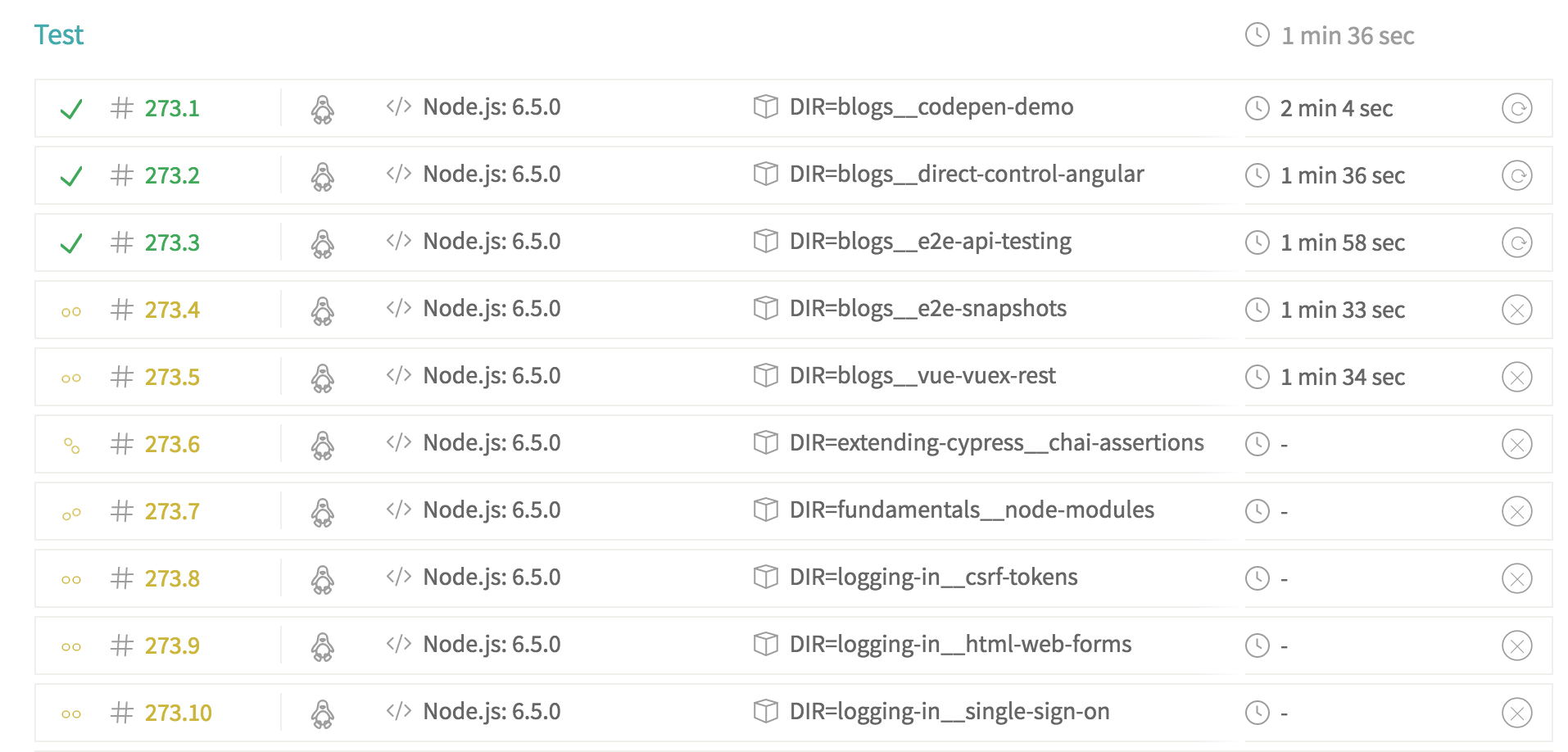

- #NPM RUN PARALLEL TRAVIS INSTALL#
- #NPM RUN PARALLEL TRAVIS UPGRADE#
- #NPM RUN PARALLEL TRAVIS CODE#
- #NPM RUN PARALLEL TRAVIS LICENSE#
When moving b we already took care to leave in place so that other moves (or removes) could handle it, but we were stomping on the destination and so was being removed.į4385d8 #10655 Preserve destination node_modules when moving. This is not, as it might first appear, something where you move an entire branch to another location on the tree. That is, the move action moves an individual node, replacing itself with an empty spot if it had children.
#NPM RUN PARALLEL TRAVIS UPGRADE#
This means, for instance, that one should be able to upgrade b in a→b→c without having npm reinstall c.īut it also means that the move action should be able to move b in to without moving or removing and while leaving in place if it was already installed. With the exception of lifecycle scripts, it expects these all to be able to act independently without interfering with each other. What's going on was a bit involved, so bear with generates a list of actions to take against the tree on disk.
#NPM RUN PARALLEL TRAVIS INSTALL#
This fixes another whole bunch of errors where you would, while running an install have it crash with an ENOENT on rename, or the install would finish but some modules would be mysteriously missing and you'd have to install a second time.

What had been a frustratingly intermittent and hard to reproduce bug became something that happened every time in Travis. The headliner this week was uncovered by the fixes to bundled dependency handling over the past few releases.
#NPM RUN PARALLEL TRAVIS LICENSE#
The license incorrectly identified the registry URL as and this has been corrected to .Ĭb6d81b #10685 Fix npm public registry URL in notices. And we fixed a bad URL in our license file.
#NPM RUN PARALLEL TRAVIS CODE#
We also eliminated the use of MD5 in our code base to help folks using Node.js in FIPS mode. Here is the screenshot of passing Travis CI after parallel build jobs.Weeeelcome to another npm release! The short version is that we fixed some ENOENT and some modules that resulted in modules going missing. Now, as we have added travis.yml and pushed it to the project repo. python backend/app/main.py > /dev/null & python backend/app/main.py > log.txt 2>&1 & pip3 install -r backend/requirements/test.txt -cache-dir

# Helps to run different languages in one. # check different combinations of build flags which is able to divide builds into “jobs”. travis.yml file using the matrix:includefeature.īelow is the code snippet of the travis.yml file for the Badgeyay project in order to run build jobs in a parallel fashion. Our project requires two buildpacks, Python and node_js, running the build jobs for both them would speed up things by a considerable amount.It seems be possible now to run several languages in one.

Now our objective is clear that we have to configure travis.yml to build parallel-y. Travis will decide the build matrix based on environment variables and schedule two builds to run. To accelerate a test suite like that, we can split it up into a few sections utilizing Travis build matrix feature. The integration test suites tend to test more complex situations through the whole stack which incorporates front-end and back-end, they likewise have a tendency to be the slowest part, requiring various minutes to run, here and there even up to 30 minutes. Let’s get started and understand it step by step. Then we will move onto configuring the travis.yml file to run tests parallely. In this blog, I’ll be discussing how I have configured Travis CI to run the tests parallely in isolated parallel builds in Badgeyay in my Pull Request.įirst let’s understand what is Parallel Travis CI build and why we need it. It should therefore run tests for the front-end and backend i.e, of two different languages on isolated instances by making use of the isolated parallel builds. Now, one of the challenging job is that, it should support the uncoupled architecture. Badgeyay project is now divided into two parts i.e front-end of emberJS and back-end with REST-API programmed in Python.


 0 kommentar(er)
0 kommentar(er)
